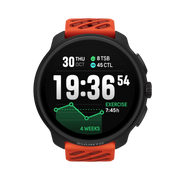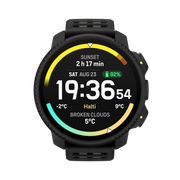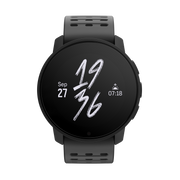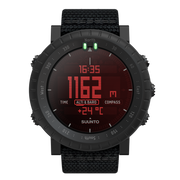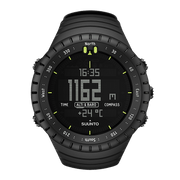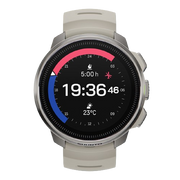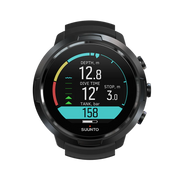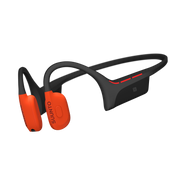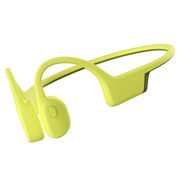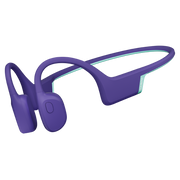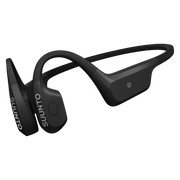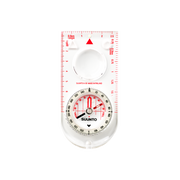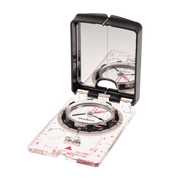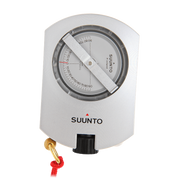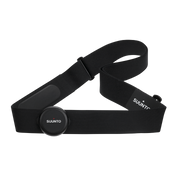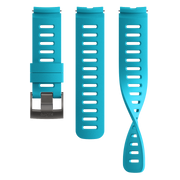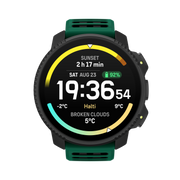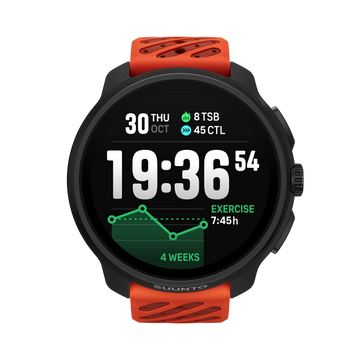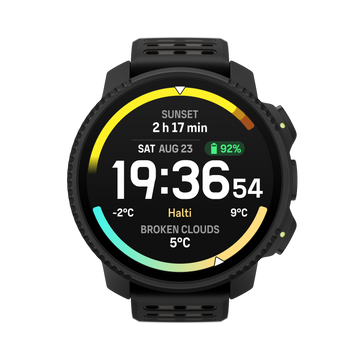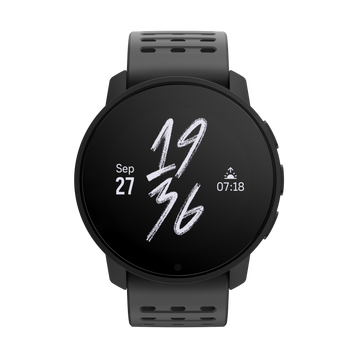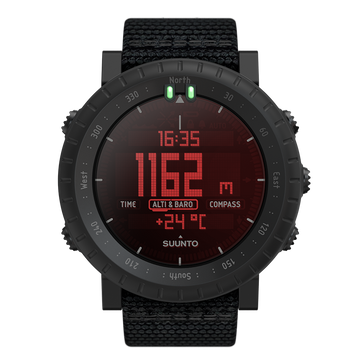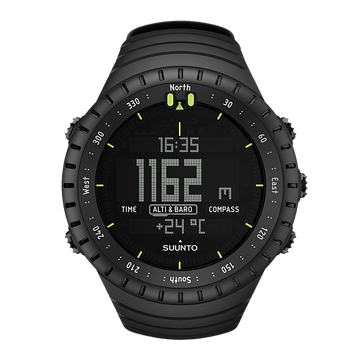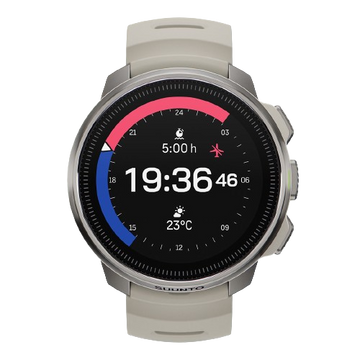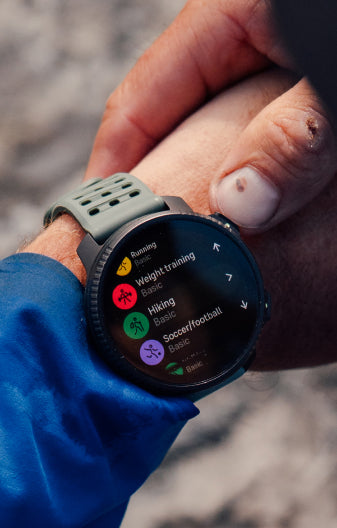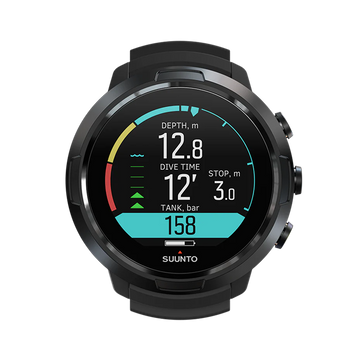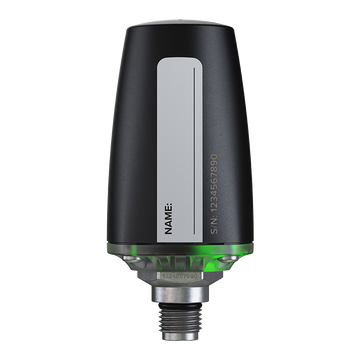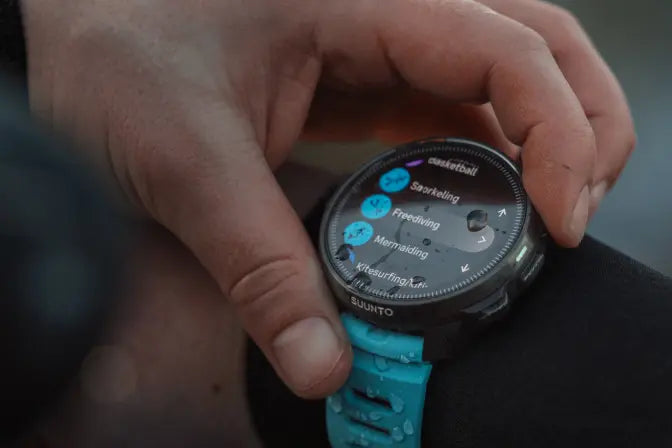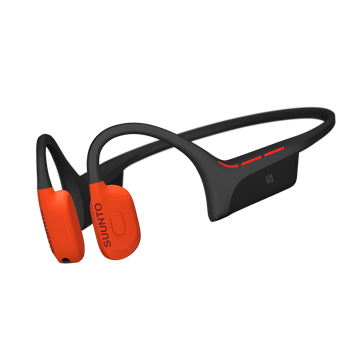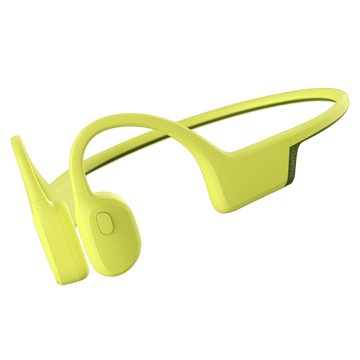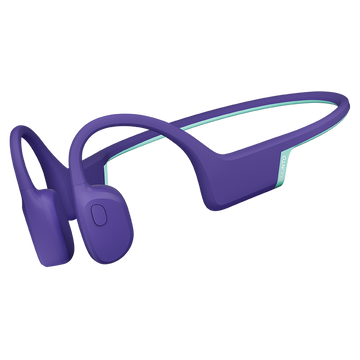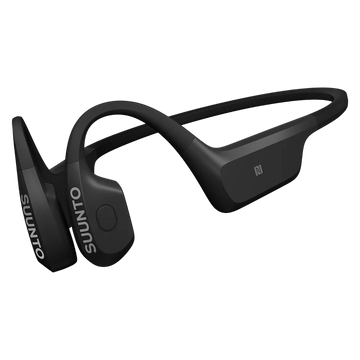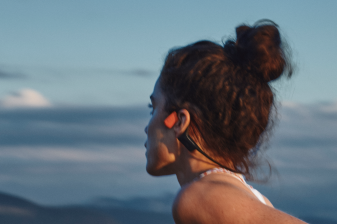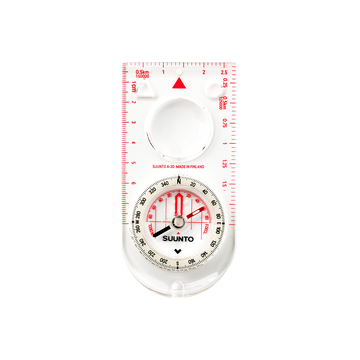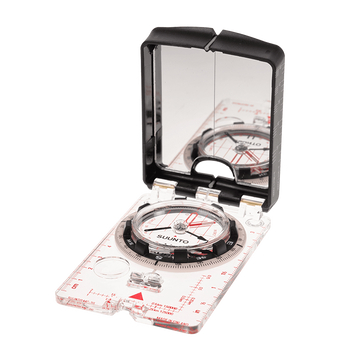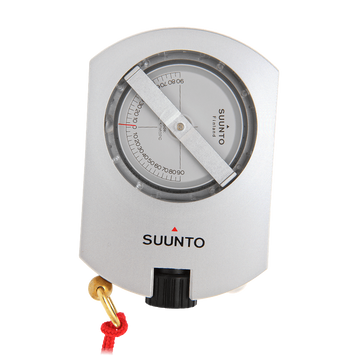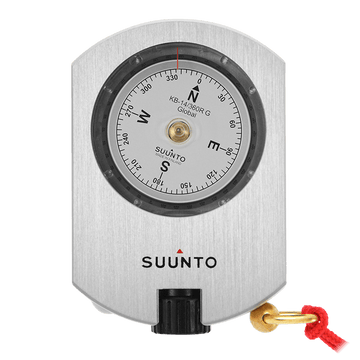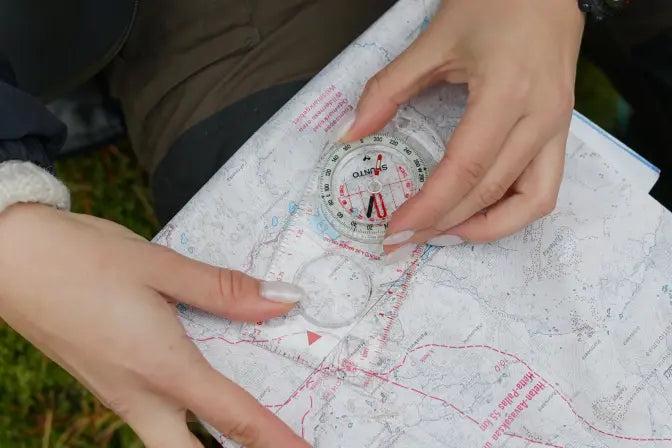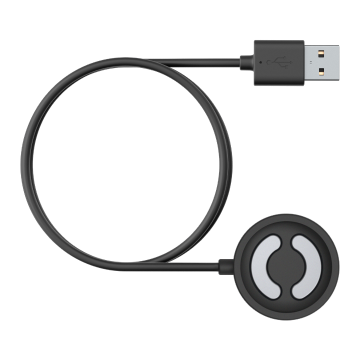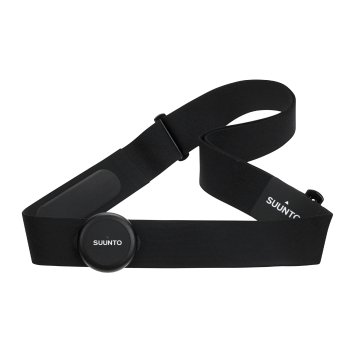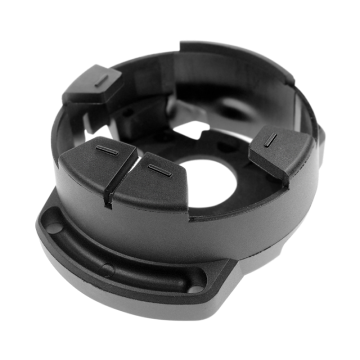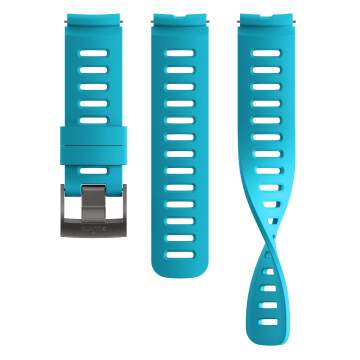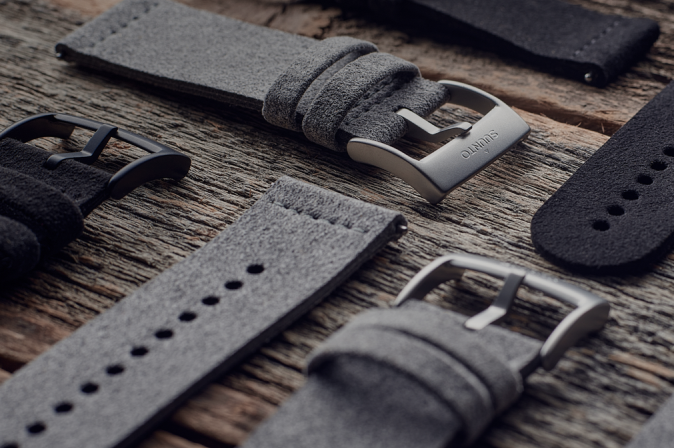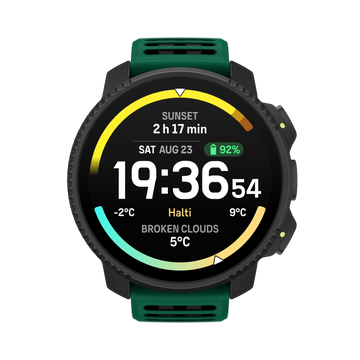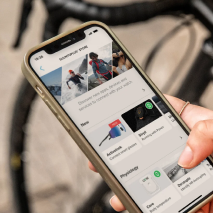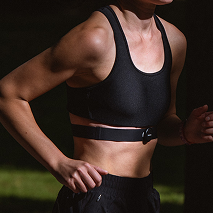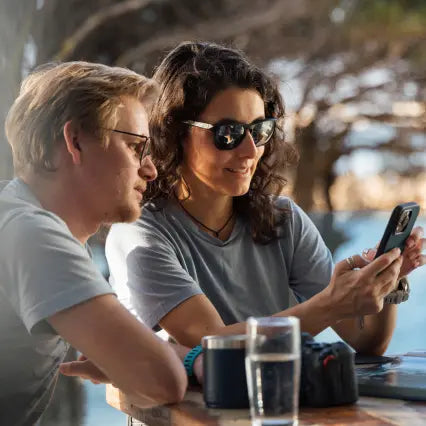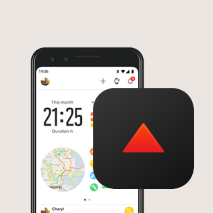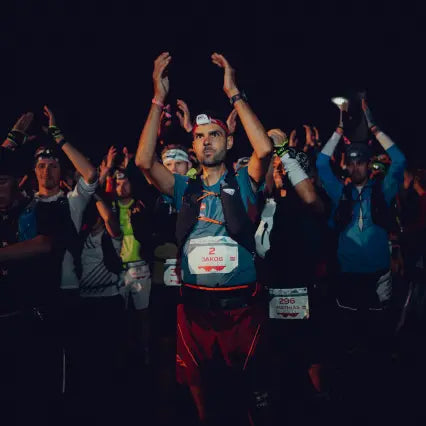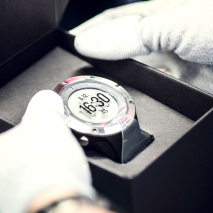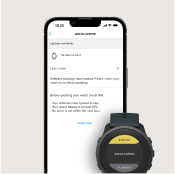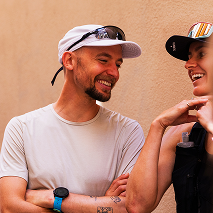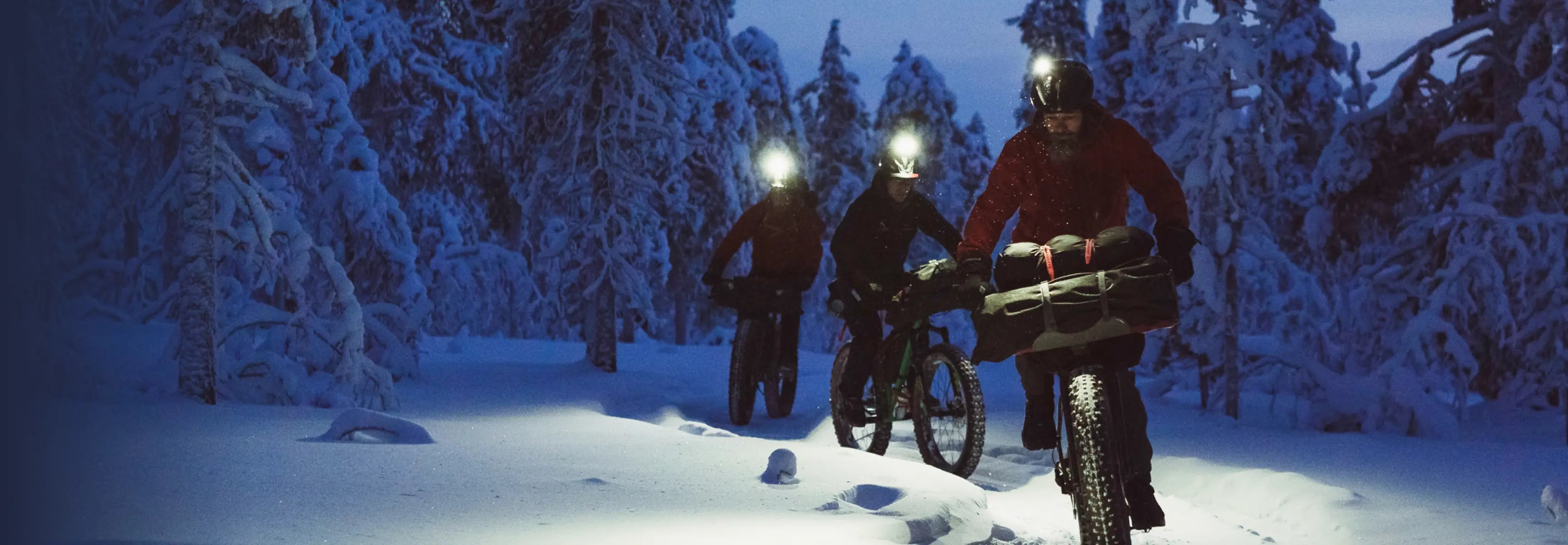
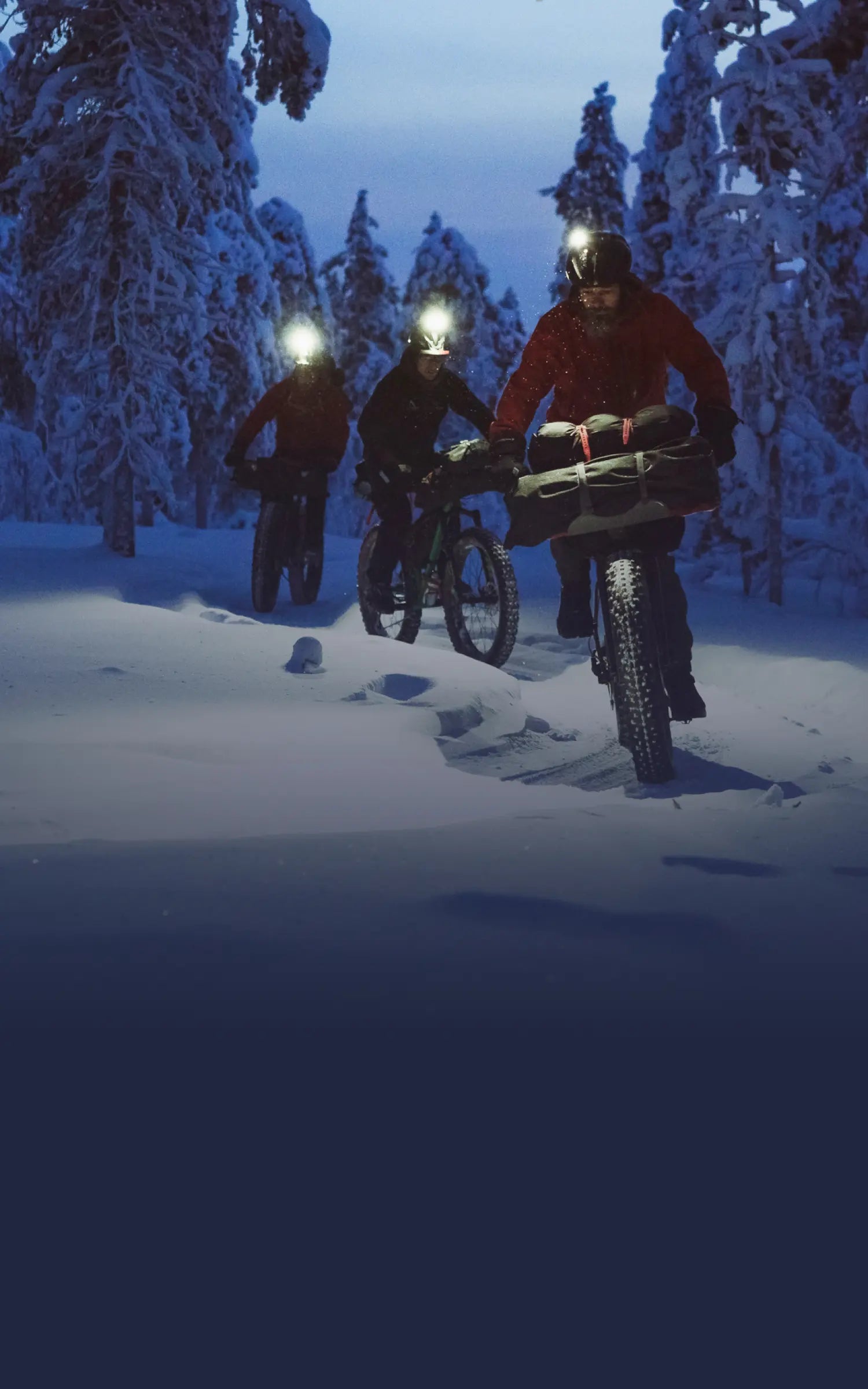
Suunto Blog

What you need to know about cold water swimming
With public swimming pools closed in many countries, swimming in open water ensures we keep our training moving forward. However, open water is usually colder water, especially earlier in the year.
We talked to Norseman Xtreme Triathlon chief medical and safety officer Jørgen Melau about how to stay safe swimming in cold water. Jorgen is currently finishing a PhD on cold water swimming and before starting his research he served in Norway’s Arctic air ambulance rescue operations.
“There are many benefits to cold water swimming,” Jørgen says “And although our research is focused on the dangers, I want to stress that the benefits of open water swimming far outweigh the risks. So I really encourage everyone to try it!”
Joakim Dokka Nordstad/nxtri.com
The benefits
Ask any dedicated cold water swimmer and they will tell you how amazing it makes them feel. This is probably because of the massive endorphin (feel good hormones) release swimming in cold water generates. Plunging into uncomfortably cold water stimulates our body’s pain system, which releases those delightful endorphins to help us manage it.
Cold water swimming is also touted to improve circulation, burn more calories, increase libido, reduce stress and strengthen the immune system.
The risks
When you suddenly enter cold water it strongly activates several branches of the nervous system. “These are strong and powerful activations, and for some vulnerable people, it can be very dangerous because it can generate arrhythmias,” Jørgen says. “It is called the autonomic conflict, if anyone is interested in learning more.”
The second risk is hypothermia, due to the cooling of the body’s core temperature. “Hypothermia is a problem only if the water is cold and the swim is very long,” Jørgen explains. “However, there are huge individual variations, and this is why it is so hard to give any exact limits. We do not recommend swimming in water colder than 12°C. And for some, it should probably be much warmer.”
Study demonstrates risk
In the 2015 Norseman Xtreme Triathlon the water temperature dropped to 10°C so Jørgen and the race organisers shortened the swim. A few months later Jorgen asked 20 triathletes to swim in 10°C water for a controlled study. The study showed that if Norseman had allowed a full distance swim in 2015, almost 50% of the athletes would have suffered from medical hypothermia. “This was a real eye opener, and something we believe is very important to know,” Jørgen says.
How to begin
Start with brief sessions
To give your body and mind time to adapt, start cold water swimming with brief sessions. Then as you become accustomed, you can gradually lengthen them.
Enter the water gradually
Jørgen advises not to jump or dive into cold water, but to enter gradually. “The human body is very adaptable to different environments. Yet, we help ourself a lot if we give the body some time to readjust. Enter the water slowly, taking half a minute to a minute.”
Stay active after
After exiting the water, stay active to warm up your body. “Your body is excellent in producing its own heat, and you do that by keeping your muscles busy,” Jørgen says. “So go for a run or hop onto the bike. “An additional tip is to dry off your wet skin when you have finished your swim; you waste a lot of heat if the body needs to dry your skin from its internal heat supply.”
Joakim Dokka Nordstad/nxtri.com
The Norseman open and cold water swimming code
Never swim alone
This really is essential. Before embracing adventure and bracing for the cold you need to find a buddy to share the journey to help keep one another safe. Alternatively, you can find someone to monitor your progress from a boat or by the shore.
Out on swims together, stay close and be observant of your swim buddy. If you swim in a group, always team up with a buddy, so you can look out for each other. It’s safer and more fun.
Avoid water colder than 12°C
Norseman advises people 12°C should be the minimum for cold water wetsuit swims. And for such low temperatures, the swims should be short.
“For many people, it’s probably wise to have a higher water temperature than this,” Jorgen cautions.
If you feel cold for more than 10 minutes, abort the swim, and get yourself warm. Be aware that the temperature and wind on land may pose a risk for hypothermia even after exiting the water.
In cold water, swim for 20 minutes only before exiting the water to warm up.
Plan your swim
Cold water swimming is a little like going up into an alpine environment in the sense you shouldn’t just wing it, and hope everything will be hunky dory. It’s asking for trouble
Research your swimming spot. Be aware of hazards like shallow water, tides, rip currents, marine life, or boat traffic. With Suunto App, use Suunto Heatmaps to find places to swim and ask people in the Suunto community who swim there for info.
Let someone at home know where you plan to swim and what time you will finish.Check the weather forecast.
Know your ability
To stay safe and to keep it enjoyable, make sure you have the ability and fitness to complete the swim you’ve planned. Keep an eye on the conditions; a wind change can quickly increase wave or swell size.
Under no circumstances go swimming during a thunderstorm. A lightning strike in water may be lethal.
Swim close to shore
If the conditions change or you get tired or start getting cramps, being close to shore means you can get out quickly. You are also easier to spot and help close to shore, and you avoid encountering potentially dangerous marine traffic.
Be prepared for emergencies
Have a plan in mind for what to do if anything happens to you or your swim buddy. Know exactly where the nearest phone (your swim tow, the car). Consider having a third person observing you both from shore. If there are known rips or currents in the area, know how to respond if you get caught in one. Where are alternative exit points?
Alexander Koerner/nxtri.com
Get emergency training
Practice how to help your buddies in open water, transiting him or her to shore, and getting them out of the water. This is important to know in the eventuality your buddy cramps.
Know your CPR and take a course regularly to maintain your knowledge.
Have the right gear
A Suunto watch paired with a Suunto Smart Sensor heart rate belt: These track your level of exertion, give you data about your stroke rate, time and distance, and the GPS will allow you to see post-swim whether you swam in a straight line or not. Plus, Suunto Heatmaps makes it easy to find popular open water swimming spots near you.
A swim tow float: these are an extra safety aid. They act as a flotation device in the event you get cramp or need to rest. They are brightly coloured so improve your visibility and can be used to store your car keys, wallet and smartphone.
A silicone hat or wetsuit hood. Try to find a brightly coloured hat so you are easily visible on the surface.
Goggles: Make sure they are comfortable to wear for an extended period and consider choosing polarized goggles to reduce sun glare for better vision.
Anti chafe balm: applying this under your wetsuit helps to prevent chafed and cracked skin.
Boots, gloves, wetsuit socks: these not only keep your feet and hands warm, they also prevent injury by providing some grip as you enter and exit the water.
Lead images: Alexander Koerner/nxtri.com
Read more articles
10 reasons to enjoy open water swimming with Suunto
5 steps to therapeutic breathing to combat COVID-19
Blaze fresh routes

Head back to work on top of things with a Suunto 7 smartwatch
Summer holidays are coming to a close in the northern hemisphere and we’re returning to work. It takes time to refocus and build momentum. It’s completely understandable to feel challenged by all the pressures of maintaining a job, business, family, plus staying fit and eating well.
Technology can’t magic the pressure away, but it can help you stay on top of things, save you time and even serve as support to build positive habits. The Suunto 7 smartwatch is powered with Wear OS by Google, providing a buffet of apps designed to help you manage everyday life. We consulted our inhouse technology geeks about which apps they find the most helpful and they came up with nine.
Spotify
Spotify's Wear OS app enables you to listen to music on your Suunto 7 without your phone – and even when offline. Connect your Bluetooth headphones with your watch and download the tracks that you want to take with you!
Learn more about listening to music on the go with a Suunto 7 and Spotify here. And once you have it, check out Suunto’s workout playlists on Spotify.
Wrist Camera
Say goodbye to awkward selfies that strain your neck as you try to get you and your two friends all in the frame. This app lets you control and preview your phone camera remotely from your smartwatch. This simple app is easy to use. Find it in Google Play here.
Todoist
Stay on top of all the tasks you need to complete with the Todoist app. You can add, check, and complete tasks with your watch. You can also track your progress on meeting daily and weekly goals. Find it in Google Play here.
Google Keep
This handy note-taking service allows you to capture ideas, notes or tasks whenever they pop into your mind. You can dictate your thoughts and Keep will transcribe them. You can create reminders and tasks, and share them with others. Click here to get it.
Bring!
No more shopping lists on the back of crumpled receipts! Your shopping just got easier with this app which allows you to create and share shopping lists with your family or friends from multiple devices, including by simply speaking into your smartwatch! Get it here.
Wear Casts
This app allows you to listen to your favorite podcasts offline. When you head out for a run, you can tune in without having to take your phone with you. Get it here.
If you prefer audiobooks over podcasts, check out NavBooks. This app places your library on your wrist – also for offline listening.
Find my phone
This handy feature is part of the Wear OS system and means you won’t ever again lose your phone down the back of the couch and think your life is over. Unless you can’t find your watch, too, in which case you are entitled to panic! All you need to do is tap a button on your watch face to make your phone ring. Breathe.
Google Assistant
Wouldn’t be nice if we could all have a personal assistant? Well, Google Assistant more than suffices. Schedule events and reminders in your calendar, create shopping lists, check the weather – all by simply speaking to your watch.
Citymapper
Get live subway, bus and train times, and find the best route to get where you need to go with step-by-step instructions – all via your watch. Get it here.
Healthy Recipes
Never ever get cookie dough on your phone again! This handy app allows you to follow recipes from your watch face, with the phone safely placed away from the chaos.
Suunto 7 support: Here you'll find user guides, how to videos and more
Read more articles
Welcome to the season of the FKT
Start your path to mountain navigation mastery here
The benefits of training to music and making your best playlist

This playlist by Camo & Krooked will get you moving
Based in Vienna, Austrian Drum n Bass duo Camo & Krooked have been producing music since 2002 and have released four albums and played at dance parties around the world.
Reinhard Rietsch (Camo) and Markus Wagner (Krooked) teamed up with Red Bull this year to create a one of a kind concert experience that paired Drum n Bass with a live orchestra. The incredible show was filmed and turned into a film you can watch here.
Aside from performing or making tunes in the studio, their other lifelong passion is skateboarding. It takes more physical strength and mental focus than you might guess, they say.
The talented duo prepared a playlist for us designed to get you moving! Read on for our discussion about balancing the party life and staying in shape ...
Camo & Krooked performing in Konzerthaus, Vienna © Philipp CARL Riedl / Red Bull Content Pool
Play your own favorite tunes from your wrist
With the Suunto 7 smartwatch you can connect your headphones to your phone and control music and other audio – adjust volume, pause and skip tracks – straight from your wrist without taking your phone out of your pocket.
You can also listen to music without your phone: Spotify has just released an update to their Wear OS app that enables offline use. Simply connect your bluetooth headphones with your watch and download the tracks that you want to take with you!
With this new feature, Spotify Premium users will be able to download their favorite albums, playlists, and podcasts to listen offline. Free users will be able to stream their tunes in Shuffle Mode using a WiFi or cellular connection, as well as download any of their favorite podcasts directly to the watch.
LEARN HOW TO USE SPOTIFY WITH YOUR SUUNTO 7
What are your favourite sports and workouts?
We both love skateboarding and have been doing it for over 20 years, so that’s definitely our favorite sport. It’s great for training the whole body due to the body tension that gets generated when doing a trick, but also the mind doesn’t fall short. Every millisecond must be thought through. Timing and position are everything in skateboarding.
But we also enjoy going on a bike tour, going for a run and hiking occasionally.
How often do you workout each week?
About every second day if time allows! If there is a deadline coming up, sometimes less. But we always try to squeeze in a skate session, a jog or a bike ride. It helps us clear our minds after a long studio session. Sometimes we come back from the workout and are more creative than before!
How does staying fit help you as a DJ?
Tour life as a DJ/musician can be very draining. A confused body clock due to jet lag and not enough time for a proper lunch can be devastating for both body and soul. Therefore it is of great importance to us to stay fit. Fitness gives us enough energy reserves in case things don’t go as planned or the schedule is just exhausting. Never underestimate the synergy between body and soul either! A fit body will support your stress threshold.
Does the night life make it difficult to maintain a routine?
We try to maintain our daily routine as best as we can, but sometimes we simply can’t since flight schedules can be tricky. Especially when travelling overseas, the jet lag can be a thorn in the eye for days.
In these situations, it is important for us to eat healthy and keep being active throughout the day (even if it is just a walk through a city park), so both body and brain can acclimate to the new time zone quickly. Also, we avoid alcohol if we have jet lag.
What is your approach to eating well and nutrition?
Usually three meals a day. The breakfast being the most important of all and probably the richest in nutrition value. We avoid lemonades and juice as much as we can and try to eat as little meat as possible nowadays. Before a gig we always try to eat the lightest and most energizing meals available, and the last meal of the day shouldn’t be too late.
Back in the days we used to go for the biggest steak on the menu, but we had to learn it the hard (and heavy) way and rethink our food habits. Having no energy after dinner and feeling like you have a rock in your stomach whilst DJing is one of the worst feelings.
What does music and movement mean to you?
Music and movement are two things that simply belong together. Music is frequencies moving through space, and these frequencies can make people move.Music can be listened to on any occasion, and that is the beauty of it. But for the genre we love and live for – Drum & Bass – it is all about moving your body. And that’s why we still can’t get enough of it after all these years. No other music genre contains so much energy and euphoria as Drum & Bass.
See you on the dance floor!
Lead images: © Harry Tiits / Red Bull Content PoolBody images: © Alissa Tsuvilskaja
Read more articles
These Japanese DJs live for music and movement
Meet the Mambo Brothers, two health conscious DJs living the night life
The benefits of training to music and making your best playlist

Get key info at a glance with the new Outdoor watch face
The new Outdoor watch face for the Suunto 9 Baro, 9, 5 and 3 watches allows users to track conditions and daylight hours with just a quick glance. No need to press buttons or scroll – the essential info is presented on the screen.
Suunto UX designer Jeanette Lau supported the development and says the motivation behind the watch face was to support users with their adventure planning. “We wanted to inspire and equip users for their outdoor adventures,” she says. “We conducted some research and we learned many of our users felt as if there wasn’t enough time in the day and wanted to know what the conditions were before embarking on their adventure.”
Click to learn about 8 tools to track the weather with Suunto
For all of the above watches, the Outdoor watch face features a sun gauge that displays the number of night and daylight hours before sunrise and sunset. Tap the screen once, and the watch face displays the number of hours until sunset or sunrise, plus the battery life remaining, or the moon phase, which is helpful because on a full moon night you know you’ll have extra light to stay out a little longer.
“Most of the time we feel as if there isn’t enough time in the day,” Jeanette says. “But with this watch face, I can see exactly how much time I have for a run before the sun sets without having to do the math myself.”
On the Suunto 9 Baro
On Suunto 9 Baro watches – which have a barometer – the Outdoor watch face also displays an air pressure gauge along with current altitude. With two taps on the screen, a more detailed screen appears, displaying the barometric trend and, once they are 2000 m or higher, the oxygen percentage.
On the Suunto 9, Suunto 5 and Suunto 3
Rather than extra barometric info, on the Suunto 9, 5, and 3 watches, the Outdoor watch face includes a steps gauge that quickly tells users where they’re at with their daily step goal and how many calories they have burned.
To get the outdoor watch face on your Suunto 9 Baro, Suunto 9, Suunto 5 or Suunto 3, make sure you have the latest software version on your watch and then enter the watch face selection in your watch settings and choose the newly loaded face.
Read more articles
8 tools for tracking the weather with Suunto

Sustain your Ability
Suunto athlete Lucy Bartholomew has published a book of her favourite recipes. Called Sustain your Ability, available in print and as an ebook, the plant based cookbook is loaded with delicious meals and treats designed to keep active people fuelled and thriving.
“These are all recipes I’ve used to pursue my athletic pursuits from the age of 15 when I started, says Lucy, now 24. “I made the book for people who are trying to sustain an active lifestyle. I was going to call it ‘sustain’ which means to nourish, to thrive, to continue to live, and ‘sustainability’ is the ability to do that for yourself. So it’s for people who want to live a consistently sustainable life. This isn’t a book with some sort of dietary fad – like ‘follow this diet for one month and you'll reach peak fitness’ – it’s for those who are passionately dedicated to being active in the outdoors.”
Now available for download, the book was three years in the making. A self described foodie, Lucy initially posted her favourite recipes on her blog and shared them via social media. Then the COVID-19 pandemic hit and the Melbourne based runner suddenly found herself in lockdown, and prohibited from travelling more than five kilometers from her home.
“I was thinking I’ve got to have a goal during this time otherwise I will lose motivation,” Lucy says. “COVID gave me time at home with a kitchen, it gave me time because I wasn’t training as much which also gave me a lot of energy. It was a nice distraction. It kept my dad and I very full.”
While all the recipes are plant based or vegan, Lucy says they are easily adaptable for people who eat dairy products or meat. “The recipes have been inspired by my travels,” she says. “After Western States in 2018 I went to Mexico where I learned about the culture and the way they make things. Then I went to Nepal and that’s where the dal recipes came from. The meals these places produce are made with ingredients that aren’t super rare or expensive, they normally consist of rice and beans.
“They are all meals I enjoy before, during and after runs,” Lucy continues. “It really shows how after nine years in the sport and the fact I still love it is because I’m able to be sustainable in the way I approach it, just like the way I eat.”
Read more articles
9 bits of positivity from a crazy year
10 must-read Suunto articles from 2020
7 tips for running in the rain

Data crunch: sports in 2020
South African ultra runner Ryan Sandes was right on the money when asked about races being cancelled in 2020: “Sure, it’s a little disappointing,” he said. “But at the end of the day it’s just a race. I’ve still got my health, I’ve still got my family. When you look at it more holistically like that it gives you peace of mind and you become a better athlete, a better human, you’re more relaxed. For running ultras you need this, you need to be calm and in a good headspace.”
Whatever your sport, having a positive, calm headspace is optimal. It hasn’t always been easy maintaining that this year. But the reverse is also true; training, pursuing the sports we love, helped to keep us on an even keel. Each reinforces the other.
The data we’ve collected and crunched from 2020 user activity shows staying active, finding ways to train, and even taking the opportunity to rest more, have been key in helping us ride out this crazy year. We’ve found ways to keep ourselves pumped. Let us walk you through the data.
Spain on top
The first wave of COVID-19 hit Spain hard. The lockdowns were strict, sudden and shocking. But that didn’t stop Spaniards from continuing to train and find ways to challenge themselves. Our data shows Suunto’s users in Spain clocked the highest total minutes per user, averaging 5,965 minutes on average.
Spanish Suunto athlete Joaquin Perez also looked out for community initiatives to help his community cope. Back in April he told us: “A good source of inspiration and motivation for the community are the multiple solidarity initiatives that exist, for example in Spain last Saturday there was an initiative to raise funds for COVID-19 research where more than 7,300 athletes ran in their homes and raised almost €83,000,” he says.
Click to read more about how Suunto athletes adapted to life in lockdown.
Go France!
Respect to Suunto users in France for having the highest total ascent numbers! They also had the highest total meters for all workouts combined in both running and cycling.
And, just like in 2019, the French had the highest "adventure running ratio": our French community ran 15 times more on the trails than on the treadmill!
We stayed upbeat
Even with tough times the average mood our users selected after each workout was "very good". This is slightly higher than the year before in spring 2019. By the time autumn arrived in the northern hemisphere it was about the same as 2019.
Check out our article about making your best workout playlist ever, and give your mood a boost on your next workout!
The most active countries were …
Take your hats off to Finland, South Africa, Sweden, Russian and Poland for having the most active Suunto users. It’s interesting South Africa is the only country in the southern hemisphere to make the list. It also went into lockdown early.
These places caught more Zs
Finland, New Zealand, Netherlands, Estonia, Belgium came out on tops for getting the most sleep. Respect to Finland for having the most active users and also the users that got the most sleep. The Finns were also the only ones sleeping more than seven hours a night on average. Impressive!
Learn how sleep can make you a better athlete!
You sport freaks mix it up
In 2020, the average number of different activity types per user was 4,2. This means an average Suunto user enjoys more than four different sports, with running the most popular.
On average, our users tracked 66.5 total workouts of any given type during 2020.
Click for 12 ways to change up your training over winter
Walking booms
When things get tough, conventional wisdom says to take a nice, long walk. Somehow Suunto users must have got the memo because there was a massive 70% increase in that activity among our users. What does this tell us? It could be that because so many of us were doing home office we found more time to take walks. Maybe with family at home, too, we took more walks together. Whatever the reasons, it can only be a good thing.
Read our articles on walking:
How to walk your way to good health
How to improve your walking technique
How to walk mindfully and its benefits
Other increases
Hiking amongst our users also had a big increase, by 37%. Mountain biking increased by nearly 20%. Unsurprisingly, there was a big increase in indoor cycling.
Swimming drops off
With pools closed, swimming dropped off with our users. Even with vaccinations available, this trend will probably continue into 2021. Our solution? We recommend you triathletes and swimmers pivot to open and cold water swimming. Read our articles on how to do them safely.
10 reasons to enjoy open water swimming with Suunto
What you need to know about cold water swimming
Diving booms!
Put your fins together for the divers! Landlocked lockdowns didn’t stop our community of explorers from venturing underwater with an average of 15.5 m depth for divers and 6 m for freedivers.
In a year of backyard adventures when divers explored what treasures their local sites have to offer, August was the busiest month on record.
Lead image: © Philipp Reiter
Read more articles
10 must-read Suunto articles from 2020
7 tips for running in the rain
14 tips for backcountry skiing this winter
